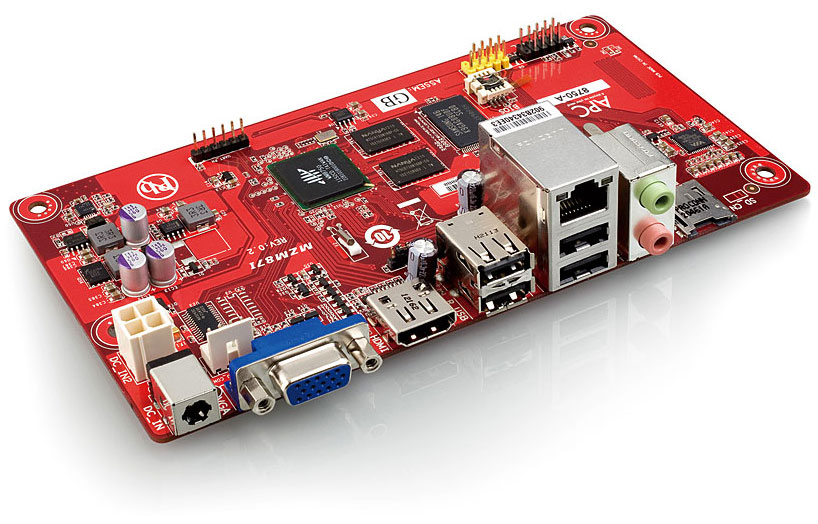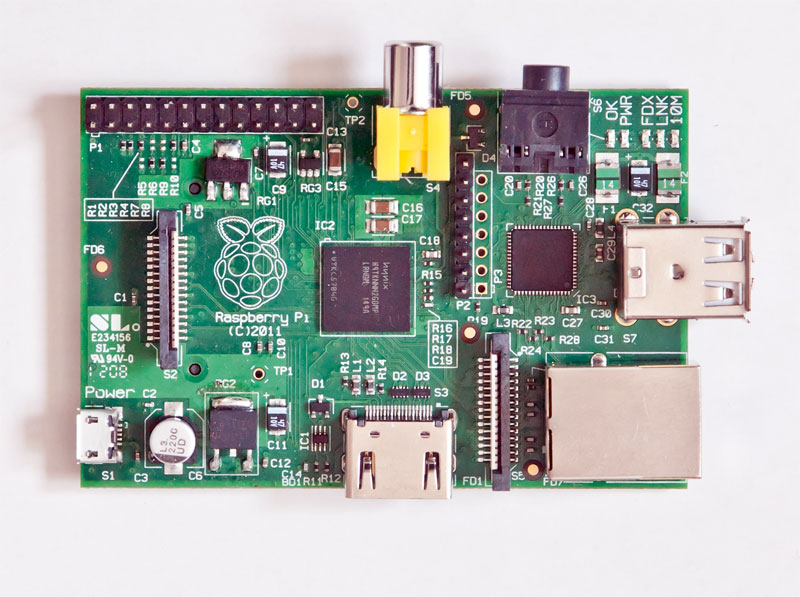While these boards can be used in a myriad of digital applications for amateur radio, the purpose of this article is take a quick look at what is out there, to plant some seeds and get the creativeness flowing...
All of these boards run a version of the Linux operations system which is a free Unix like operating system it has a number of advantages over the Microsoft based offerings.
- It’s free !
- Posix compliance (reacts to real time events better than windows)
- Large community support
- Open source ( Code is open to scrutiny and can be modified for your needs )
- Complete software development suites in most languages (C++, Java, .Net etc… )
- Can be configured for a nice graphical interface or Command line interface
Let’s take a look at what’s out there!
I will be ignoring the both the Panda board and the Beagle boards as these are targeted to more of a development environment or are more expensive.
Let`s start with the board that’s creating a lot of buzz
Raspberry Pi [www.raspberrypi.org]
Price: $35.00
Based on the Broadcomm BCM2835 System on a chip.
• ARM 11 running at 700 MHz processor,
• Video GPU
• 256 Megabytes of Ram ( Can’t be upgraded)
• 2 USB 2.0 ports
• HDMI and Composite Video outputs
• 10/100 Ethernet RJ-45 Jack
• SD Card socket
• 8 × GPIO, UART, I²C bus, SPI bus with two chip selects, +3.3 V, +5 V, ground
• Audio output from HDMI as well from a standard 3.5mm jack
All in a board 85.60mm x 53.98mm x 17mm.
Current operating systems for this are Debian GNU/Linux, Fedora, Arch Linux ARM, all of these are available on the web so all you have to download them copy them to the SD card and boot the Pi from the SD and you are up and running with a Graphical Linux Operating system.
APC [www.apc.io]
Price: $49.00
Based on the Via’s Wondermedia WM8750 System On a Chip

• ARM 11 running at 800 MHz processor,
• Video GPU
• 512 Megabytes of Ram ( Can’t be upgraded)
• 4 USB 2.0 ports
• HDMI and VGA Video outputs
• 10/100 Ethernet RJ-45 Jack
• MicroSD Card socket
• Audio output/Input from a standard 3.5mm jack
All this in 170 x 85mm package, this is the NEO-ITX standard which is compatible with Mini-ITX and MicroATX (this means it will fit in a MicroATX/Mini-ITX PC case).
Currently the only operating system for this is Android 2.3 which ships with it (pretty sure that within a couple of months that there will be a couple of flavors of Linux available for it)
OK, so we have the platforms what are we going to do with them? Well let’s see what some of our fellow hams have started to do …
John Hays of NW Digital radio has successfully downloaded and run Jonathan Naylor’s (G4KLX) GMSK Repeater and IrcDDB Gateway software on the Raspberry Pi and there is a D-Star repeater LD1XI in Norway that is now running on the Raspberry Pi connected to the DVRPTR.
The code was even complied on the Raspberry Pi; the OS is Debian "Squeeze" beta. IrcDDBgateway and DVRPTR repeater run at 10-11% CPU each when active.
Although the APC, which has a little more computing power maybe a better choice, having a D-Star hotspot for the price of the GMSK board and a Raspberry Pi, that’s pretty cool! You are no longer using a PC as the controller.
Expanding on the D-Star hotspot: how about a portable, solar powered, D-Star hotspot based on a APC or Raspberry Pi, with a wireless USB adapter, a GMSK Modem board? Paired with a AMBE codec board it could enable a standard radio to become a D-star radio on any frequency (220mhz, HF, whatever you'd like...)
Another application for these low power computing platforms could be a controller for a SDR ( Software Defined Radio). But, that is a topic that we will get on to on a future article.
Conclusion
By combining digital radio with small form factor, low cost computing platforms and open source free software we have a great recipe for experimentation and a way of getting younger internet savvy people back into the hobby.
I hope that I have given you a quick look at some of the exciting things that are coming our way and if I can be of any help or if you just want to ask questions you can find me at bruce.given@gmail.com
73, Bruce VE2GZI


Hello,
ReplyDeleteRapberry Pi (Model B, $35 ) comes now with 512 MByte of Ram - same price